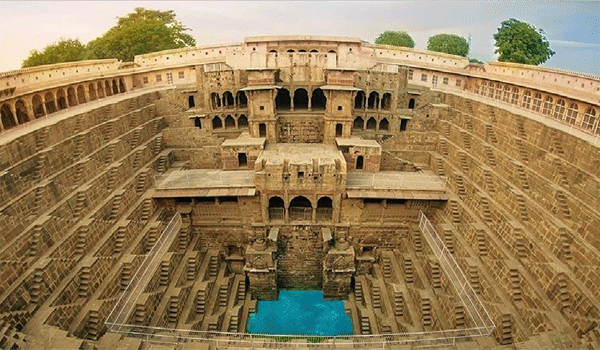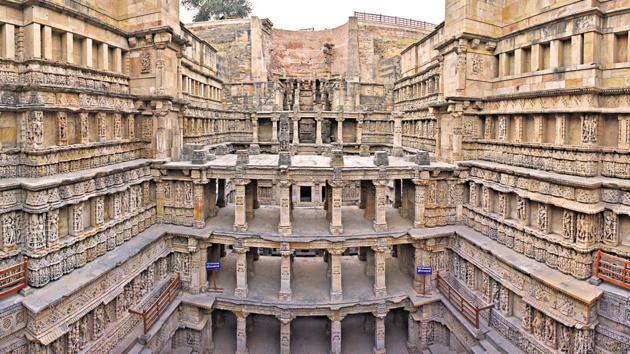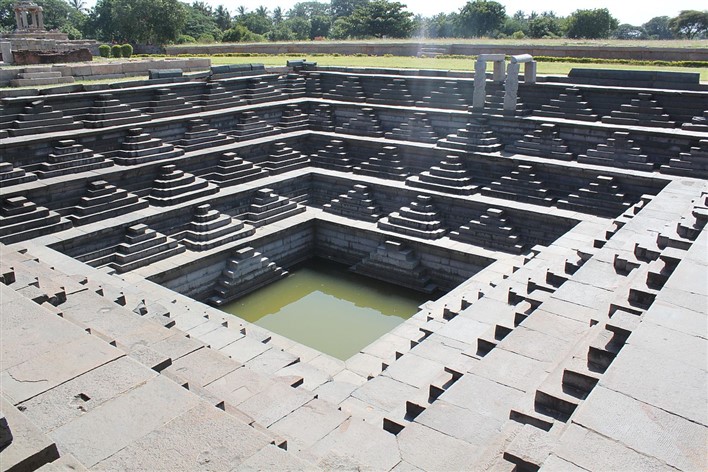Throughout history, every great civilization has made contributions to the world of architecture. The Romans gave us great domes made of Roman concrete, the Greeks provided us with Corinthian and Doric pillars, and from India arose the art of constructing massive stepwells, elevating the humble act of collecting water into an extravagant piece of public theatre.
Stepwells or as they are popularly known, Baolis, ponds and wells that can be reached by a descending set of steps. Often a source of year-round groundwater, these structures were used for religious ceremonies and social gatherings, as the Baolis provide a retreat from the daytime heat in summers. Therefore, various affluent communities, guilds and dynasties constructed massive stepwells with stunning stonework, bas-reliefs and ornamentations.
These public structures were expressions of status, power and beliefs of the affluent. However, after the advent of the British, who considered these stepwells a source of polluted water, the focus subsequently shifts to drilled and bored wells as the source of water. The vast majority of Indian stepwells fell into disuse. In areas without consistent, coordinated trash removal, many disused stepwells became handy pits into which garbage is thrown.
This is an architecture that covers the landscape of South Asia but has become invisible to the people. As many of these vestiges of Indian heritage are in danger of being forgotten and destroyed, here are the five stunning stepwells that remind us of the need to appreciate and conserve these architectural marvels:
1. Chand Baori, Rajasthan

Perhaps the most striking of all India’s stepwells, Chand Baori has featured as the setting for a string of Bollywood songs and dance numbers. Some 3,500 steps topple down the sides of the enormous central tank, arranged in an intricate criss-cross pattern that recalls the facets of a cut diamond – albeit one that’s 13-stories deep and 35m across from side to side.
2. Rani-ki-Vav, Patan, Gujarat

It is one of the few surviving relics from the once-powerful Chalukya kingdom, which ruled large areas of Gujarat and parts of Rajasthan in the 11th century. Dropping vertiginously into the ground in a series of carving-covered tiers, this monumental stepwell was constructed on the orders of Udayamati, wife of the Chalukya king Bhimdev I. The remarkable state of preservation of Rani-ki-Vav is actually the result of a natural disaster – the monument was filled with silt in the 13th century and only re-exposed in the 1940s. Today, the stepwell is a UNESCO world heritage site, both for its superstructure, and for the intricacy and elegance of the carvings of Vishnu and other deities that cover every spare inch of exposed stone.
3. Agrasen Ki Baoli, Delhi

This oft-missed Delhi landmark opens up unexpectedly in the middle of a New Delhi street, just minutes from the mercantile chaos of Connaught Place. The stepwell cuts a 60m-long slice through the earth below the Indian capital, faced with niches set under Islamic arches, accessed via a single sweeping stairway. The structure seen today was most likely constructed during the Tughlaq period in the 14th century when Delhi was ruled by a dynasty of Turkic sultans.
4. The Pushkarinis of Hampi, Karnataka

Stepwells are primarily a north Indian tradition, but the Vijayanagar ruins at Hampi are dotted with ceremonial tanks, or pushkarinis, that are built in the stepwell style. Within the royal enclosure, the Stepped Tank is a classic Indian stepwell, long since stripped of its upper pavilions, but with its eye-pleasing cascade of pyramid-shaped stairways still intact. Along with nearby ruins such as the Elephant Stables and Queen’s Bath, it gives a powerful sense of the ceremony-filled lifestyles of Hampi’s ancient rulers.
5. Surya Kund Stepwell, Modhera, Gujarat

An easy day trip from Ahmedabad, the handsome 11th-century Sun Temple at Modhera was built so that the dawn sun would shine into the inner sanctum during the equinox – a homage to the rulers of the Solanki dynasty, who claimed to be descended from the sun. The temple pavilion backs onto the Surya Kund, a huge stepwell studded with more than 100 small shikharas (spired temples) and shrines, like a sunken art gallery of carved stone. The whole complex was the brainchild of King Bhimdev I, whose wife was responsible for the enormous Rani-ki-Vav at Patan.


















